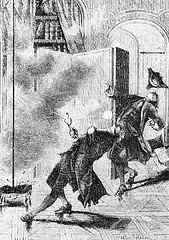Suppose we hold an election with three candidates, X, Y, and Z. And suppose the voters fall into three groups:
Group 1 prefers, in order, X, Y, Z
Group 2 prefers, in order, Y, Z, X
Group 3 prefers, in order, Z, X, Y
Now, if Candidate X wins, his opponents can rightly object that a majority of voters would have preferred Candidate Z. And corresponding arguments can be made against the other candidates. So even though we’ve held a fair election, it’s impossible to establish majority rule.
The Marquis de Condorcet noted this oddity in the 1700s; it’s sometimes known as Condorcet’s paradox.



